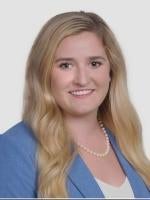The City of Bloomington, Minnesota is the latest city in Minnesota to join the cities of Minneapolis, St. Paul, and Duluth in enacting an Earned Sick and Safe Leave ordinance (ORDINANCE NO. 2022-31). The Ordinance, which largely mirrors the requirements of the City of Minneapolis’ Sick and Safe Time Ordinance goes into effect on July 1, 2023. Specifically, the Ordinance requires employers with five or more employees to provide employees with 1 hour of sick and safe time for every 30 hours worked within the geographic boundaries of Bloomington, up to a maximum of 48 hours in a year. Employers with fewer than five employees must still comply with the requirements of the Ordinance but may provide the sick and safe time as unpaid.
Who is Covered?
All employers with at least 1 or more employees are covered, regardless of if the employer has a physical presence in Bloomington. The definition of “employer” includes an individual, corporation, partnership, association, nonprofit organization, or group of persons. It does not include the United States government, the State of Minnesota, or any county or local government, except the city of Bloomington.
Only employees, including exempt and non-exempt employees, working at least 80 hours in one year on a full- or part-time basis, or temporary basis, in the city of Bloomington are “covered employees” under the Ordinance.
Employers may use their existing paid time off (“PTO”) policy or other paid leave policy to satisfy the requirements of the Ordinance so long as the existing policy meets or exceeds the minimum requirements of the Ordinance.
Accrual of Paid Sick Time
Covered employees must accrue a minimum of 1 hour for sick and safe time for every 30 hours worked within the City. Employers are permitted to cap the accrual at 48 hours in a calendar year. Employees must be permitted to carry over any accrued but unused sick and safe time into the following year, subject to a total cap of 80 hours at any time.
New employees begin to accrue sick and safe leave at the commencement of employment or on July 1, 2023, whichever is later, but they cannot begin to use their paid sick and safe leave until 90 calendar days after the start of their employment.
Use of Sick and Safe Time
Similar to the other ordinances in Minnesota, employees may use their accrued sick and safe leave for their own or the care of a family member’s mental or physical, illness, injury, health condition, diagnostic or preventive care.
Employees can also use the leave due to an absence because of domestic abuse, sexual assault or stalking of the employee or the employee’s family member. Employees may use the leave due to the closure of the employee’s place of business or the employee’s need to care for a family member whose school or place of care has been closed due to certain unexpected closures or, in the case of a school or place of care’s closure, due to inclement weather.
Employers may require employees to provide up to seven days' advance notice when the use of the sick and safe time is foreseeable.
Employees may use paid sick leave in increments consistent with current payroll practices as defined by industry standards or existing employer policy, provided such increment is not more than 4 hours.
Notice and Recordkeeping
The Ordinance requires employers to display a notice promulgated by the City in a conspicuous place at any workplace or job site where any employee works. Additionally, employers must include the notice in their handbook informing employees of their rights and remedies.
Upon an employee’s request the employer must provide the employee, in writing or electronically, the employee’s current amount of (a) accrued sick and safe time; and (b) used sick and safe time. Employers can satisfy this obligation by listing the information on each pay stub or including it on an online system where employees can access it.
Employers must maintain records for each employee showing hours worked (applicable to non-exempt employees), leave available, and leave used for three years in addition to the current calendar year.
Enforcement
The City Attorney’s Office is tasked with the authority to investigate any report of a suspected violation of the Ordinance. For first violations arising during the first year following the effective date of the Ordinance, the City Attorney’s Office will issue a warning letter, and notice to correct and attempt to mediate disputes. For subsequent violations, the City Attorney’s Office may impose the penalties provided in the Ordinance, including reinstatement, back pay, credit or payment of sick leave, and administrative penalties or fines.
What’s Next?
Covered employers should begin to review their existing policies to ensure compliance with the new sick and safe leave requirements. Additionally, employers will need to post the notice and update their handbooks to include a policy regarding the Ordinance.





 />i
/>i
